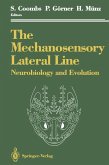For more than 30 years, the visual cortex has been the source of new theories and ideas about how the brain processes information. The visual cortex is easily accessible through a variety of recording and imagining techniques and allows mapping of high level behavior relatively directly to neural mechanisms. Understanding the computations in the visual cortex is therefore an important step toward a general theory of computational brain theory.
Biological structures can be seen as collections of special devices coordinated by a matrix of organization. Devices are dif?cult to evolve and are meticulously conserved through the eons. Organization is a ?uid medium capable of rapid adaptation. The brain carries organizational ?uidity to the extreme. In its context, typical devices are ion channels, transmitters and receptors, signaling pathways, whole individual neurons or speci?c circuit patterns. The border line between what is to be called device and what a feat of organization is ?owing, given that in time organized s- systems solidify into devices. In spite of the neurosciences' traditional concentration on devices, their aiming point on the horizon must be to understand the principles by which the nervous system ties vast arrays of internal and external variables into one coherent purposeful functional whole - to understand the brain's mechanism of organization. For that purpose a crucial methodology is in silico experimentation. Computer simulation is a convenient tool for testing functional ideas, a sharp weapon for d- tinguishing those that work from those that don't. To be sure, many alternatives can only be decided by direct experiment on the substrate, not by modeling. However, if a functional idea can be debunked as ?awed once tried in silico it would be a waste to make it the subject of a decade of experimentation or discussion. The venture of understanding the function and organization of the visual system illustrates this danger.
Biological structures can be seen as collections of special devices coordinated by a matrix of organization. Devices are dif?cult to evolve and are meticulously conserved through the eons. Organization is a ?uid medium capable of rapid adaptation. The brain carries organizational ?uidity to the extreme. In its context, typical devices are ion channels, transmitters and receptors, signaling pathways, whole individual neurons or speci?c circuit patterns. The border line between what is to be called device and what a feat of organization is ?owing, given that in time organized s- systems solidify into devices. In spite of the neurosciences' traditional concentration on devices, their aiming point on the horizon must be to understand the principles by which the nervous system ties vast arrays of internal and external variables into one coherent purposeful functional whole - to understand the brain's mechanism of organization. For that purpose a crucial methodology is in silico experimentation. Computer simulation is a convenient tool for testing functional ideas, a sharp weapon for d- tinguishing those that work from those that don't. To be sure, many alternatives can only be decided by direct experiment on the substrate, not by modeling. However, if a functional idea can be debunked as ?awed once tried in silico it would be a waste to make it the subject of a decade of experimentation or discussion. The venture of understanding the function and organization of the visual system illustrates this danger.
From the reviews: "An increasingly important technique used by basic scientists to understand brain development and function is theoretical/computational modeling. ... Computational Maps in the Visual Cortex provides a good review of this area, though strongly emphasizing the models developed over the past several years by Miikkulainen's group in the Computer Science department at the University of Texas. ... the book will be a useful reference for researchers interested in theoretical approaches for understanding certain properties of the visual cortex." (Geoffrey J. Goodhill, Clinical Experimental Ophthalmology, Issue 34, 2006) "The hardcover book of 24.2×16.3×3 cm size presents a comprehensive, unified computational theory of the visual cortex as a laterally connected self-organizing map ... . All chapters are clearly structured and well written. With more than 170 figures, 47 in full color, the chapters are richly illustrated. ... The book is written for computational scientists and neuroscientists working in the field of the visual cortex. The book will be a valuable complement to every scientific library." (R. M. Müri, Graefe's Archive for Clinical and Experimental Ophthalmology, Vol. 245, 2007)









